Was the squad among the early Slavs?
Entry
В previous article on VO we touched upon the actual military organization of the early Slavs within the framework of the tribal system, as well as the absence of a military “aristocracy” at this stage of development. Now we turn to other military institutions: the prince and the squad in the period of VI-VIII centuries. Controversial issues of this issue will be addressed in this article.
Military leader
Actually, the term "prince", according to the generally accepted view in science, was borrowed by the Proto-Slavs from the Germans, although the East Germanic tribes (Goths) did not know this name. The idea that this term is of Slavic origin has not received distribution (“sticking out, outstanding”).
The tribes or unions of the tribes were headed most often or primarily by “kings” priests (leader, lord, pan, span), whose submission was based on a spiritual, sacred principle, and not under the influence of armed coercion. The leader of the Valinana tribe, described by the Arab Masudi, Majak, according to some researchers, was just such a sacred, and not a military leader (Alekseev S.V.).
However, we know the first "king" of Ants with the speaking name of God (Boz). Based on the etymology of this name, it can be assumed that the Antian ruler was primarily the high priest of this tribal union. But what the author of the twelfth century wrote about this Helmold from Bosau about the Western Slavs:
No wonder in Polish, Slovak and Czech the “prince” is a priest (knez, ksiąz).
Thus, the initial, main hypostasis of the head of the clan was the priestly function as the realization of the connection of society with the gods.
Another, one might say, natural activity was the judiciary, if within the family, then this right has, so to speak, an organic character. It stems from the right of the heads of the clan to execute and have mercy. But with the increase in the number of clans, tribal judges also appear, which could be all the same heads of the older clan. Their functions included solving problems between members of the same tribe, but of different clans.
Much later, during the emergence of the Polish state, we have information from the Dagome Codex, where the founder of the Polish state Mieszko is a “judge”. There are different opinions on this. It seems to us that the conclusions drawn from the comparative material from the biblical stories, this institution is most clearly explained: according to the Bible, a judge is a sovereign chosen by God, but not a “king." And the judges of the Old Testament are the elder rulers.
Samuel, by the way, is both a high priest and a judge, but not a military leader (K. Gorsky).
That is, Meshko was primarily the head of the tribal union of the Polyans (Poles), where the key function in the management was to judge and “row”, by the way, in the text there are four judges who rule the Polyans (Poles). The military function was still secondary, but in the conditions when Poland was on the verge of early state formation, it came to the fore: military power became public.
It is worth noting that Meshko’s wife, the daughter of the Margrave Dietrich (965–985), is named in the source by the term “senator” (senatrix), and, based on the Roman political tradition, the “senator” is more likely not an “judge”, but an elder (old man - senex), however, it was the elder of the clan who played the role of “judge”.
Thus, initially the head of the clan, and after him the tribal organization, possessed two functions important for the clan society: the priest and the judge.
Under the conditions of an agricultural society, the most important natural function was to understand the agricultural cycle and “control” over the elements, it could be possessed only by an “elderly” person who simply had more natural experience, such was the elder or head of the clan. The military function was secondary at this stage and became important in the event of external aggression or family migration.
However, often the “supreme” priests could also act as a military leader, not because of the “established order”, which was not at this stage, but because of desire or opportunity, as J. J. Frazer wrote:
Ammianus Marcellinus observed the same situation among the Burgundian tribes (370):
These were originally the functions of the kings (rex) of Rome, the Scandinavian kungs and the ancient Greek basileus. Here is the subsequent source of sacralization of power.
Some Germanic tribes, as we know from sources, in particular the Franks, are ready in the VI century, and, perhaps, earlier, the idea is that the king of the whole nation should be a representative of one of the noble clans (Merovingi, Amaly ), but in practice this was not always the case, and the choice of the whole people often fell on the leaders of the valiant and warlike, but not related to the specified clans, for example, Goths in Italy in the VI century. kings were not necessarily chosen from the same kind of Amals (Sannikov SV).
The Slavs during the period under review had “princes,” or, more correctly, military leaders, were necessary only for the discharge of military functions; public authority did not transfer to them. As Caesar wrote about a similar state of German society:
Thus, we can say that the management of society was carried out at the level of the gens - by the elders. The unification of clans, and even tribes, could take place only on a sacred basis, and the “princes” were only military leaders, sometimes, possibly, simultaneously heads of clans.
If the function of the head of the clan and the military leader coincided, then its carrier led the community, but if he was only a military leader, then outside the military expedition or threat, such a leader did not have public authority.
Squad
In this case, using the term “squad”, we are not talking about the squad at all, but about the military-police institute. Given its presence in all Slavic languages, it must be understood that the squad was understood not only as the specified institution. So, it is thought, a group of youth of the same age and from the same tribe, who undertook a raid, campaign-initiation, etc., was also called a squad, but not every squad is important to us, but such as an institution for formalizing public professional authority.
Such a squad is, firstly, a structure that denies the clan structure of society, it is based on the principle of not clan but personal devotion, and secondly, it is not in a community organization, it is torn from it socially and territorially (Gorsky A. A.).
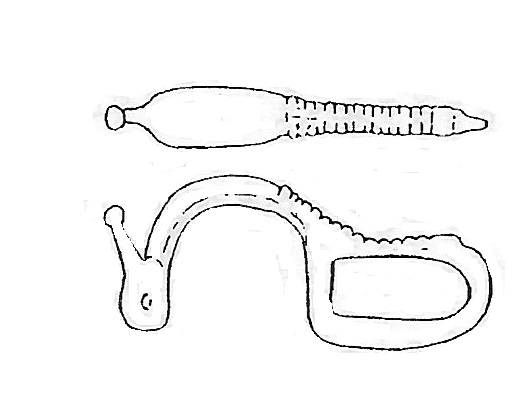
As for the period of the VI-VIII century, there is no evidence of the presence of squads in the sources. Despite this, a large number of experts believe that the squad among the Slavic tribes was already in the VI (or even V) century.
The authors of the Soviet period proceeded from the aging of the emergence of class society among the Slavs, among the Eastern Slavs in particular. Therefore, they pointed out that all state institutions, including squads, began to form during the movement of the Slavs to the south and west. Modern authors also modernize the situation, using, for example, terms such as “power centers” of the early Slavs, ignoring the real picture of the development of tribal and pre-state structures in their progressive development.
With such conclusions, it is not entirely clear the sharp lag of the Slavic social institutions from their neighbors from the West, the “lag”, explained only by the fact that the Slavs later embarked on the path of historical development and the emergence of social structures took place gradually.
I repeat, in the history of any ethnic group there are a lot of factors that dramatically affect their development, the most important of which was the war, but first of all, in the case of the Slavs, this is the entry into the path of historical development much later than the neighbors and in conditions significantly more complicated compared to them.
In the conditions of the tribal system, when the prince or leader acts only as the leader of the tribal militia during the raid or military danger, the squad cannot exist. Therefore, historical sources of this period do not report on it. It’s one thing “squad” for a joint one-time campaign, another thing is a structure consisting of professional, that is, living only war or princely warriors who are under one roof and bound by oaths of allegiance with their leader.
It is significant that in his notes on the Gallic war the Germans 'squad, unlike the Gauls (“Solduria”), cannot be discerned, but in Tacitus it already appears distinctly, and the difference between the authors' lives is only 100 years old. So, the military tribal leader of the Cherusks Arminius, who crushed in the 9th century. Roman legions in the Teutonburg Forest, was killed by fellow tribesmen for encroaching on the title of rex, that is, when trying to be not only a military leader (cunning), but also gain public power.
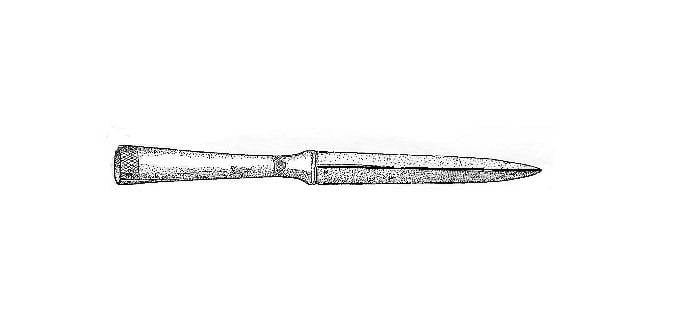
The squad is an integral tool for the formation of proto-state relations through violence, but in a situation where Slavic society was unable to bear the additional material burden and lived (surviving) through the acquisition of the surplus product by the war, the squad could not arise. The legendary Cue (ca. VI c.) Wanted to establish a new city on the Danube, being on a campaign with his whole clan (male part), and not with his squad. This just explains the situation when, in the war of Gepids and Lombards, on the side of the Gepids in 547 (or 549), Ildiges fought, having lost the Lombard throne, with "many slaves" from Panonia. After the ceasefire, he fled to the skleps beyond the Danube, and subsequently went on a campaign to help the Goths of Totila at the head of 6 thousand sklavins. In Italy, they defeated the detachments of the Romance commander Lazarus, a little later Ildiges, not connecting with the Goths, went to the slaves.
It is not necessary to say that there couldn’t be people who lived only in the war, or warriors in such numbers, but only a tribal militia could give such a number. Again, a comparison comes with the campaign of the “clan” of Kiy, all the more so as “with the Goths he [Ildiges. - V.E.] did not connect, but crossed the Istrian river and retired to the slaves again. ” Obviously, with all the Slavic militia participating in the campaign and probably fulfilling their task of “enriching” in Italy torn by strife, especially since such a large contingent in Italy is no longer mentioned. For comparison: during this period, in 533, on a campaign in Africa, the Byzantine commander Belisarius had a thousand meruls, Narses brought 2 thousand meruls with him to Italy, which substantially bled the tribe of meruls. In 552, he also hired 5000 Lombards for the war in Italy, who also returned to their home in Pannonia, etc.
Consider another situation that sheds light on the race as a structural unit of Slavic society, including the military.
Justinian II in the 80s of the VII century. He actively fought with the Sklavinia in Europe, after which he organized the resettlement of Slavic tribes (some under duress, others by agreement) in the territory of Asia Minor, in Bithynia, the Opsician theme, on the most important border with the Arabs for the empire. Military settlements were created here, led by the Slavic “prince” Nebul. Only the "selected" army of the Slavs, without wives and children, amounted to 30 thousand soldiers. The presence of such a force gave rise to an unbalanced Justinian II to break the peace with the Arabs and begin hostilities. In 692, the Slavs defeated the Arabs in Second Armenia, but they resorted to tricks and bribed the leader of the Slavs, sending him a quiver full of money, most of his troops (20 thousand) fled to the Arabs, in response to the mentally ill Justinian exterminated the remaining wives and children of the Slavs. The escaped Slavs were settled by the Arabs in Antioch, created new families and made devastating raids and campaigns within Byzantium.
I’m far from asserting that the “kind” is only its male part, but what happened in Asia Minor suggests that the “kind” could be created anew both in Antioch and in the new city on the Danube, as in the case of Kiem, yes, by the way, in the case of the “Russian clan” of the first century of Russian history.
In “Miracles of St. Dmitry Solunsky” a large army is described, which “consisted entirely of selected and experienced warriors”, “the chosen color of the whole Slavic people”, which “surpassed those who had ever fought against them by force and courage”. This detachment of 5 thousand selected Slavic warriors is called by some modern researchers a squad, which is difficult to agree with (both the size of the squad and the existence of it as an institution at that time, according to the arguments given above).
The data that we have about the fighting of the Slavs in the 22th century cannot be interpreted as a joint use of squads and militias: even Samo, who was elected the “king” of a large proto-state association directed against the serious and completely militarized Avar society, did not have a squad . He had XNUMX sons, but not one of them did not inherit the “royal” power, all the more, as one might assume, did not have a squad with which they could compete for power.
Both written, and especially archaeological sources of this period do not allow us to talk about professional squads. And, as S. Ivanov wrote, by the way, a supporter of the emergence of a squad in this period:
Which is natural, since the Slavs were at the pre-state stage of development.
Attempts to interpret this structure on the basis of the presence of elements of rich weapons indicated in the sources of the names of leaders and mercenaries have no foundation (Kazan M. M.).
Which is quite obvious, since Slavic society was not early state. Opinions about the presence of squads at this time are speculative and based on nothing.
It should be noted that, as at the beginning of the Viking era, militia was not much different from a combatant, unlike the conventional wisdom about “superprofessional” combatants, since a free-howling life was full of dangers and, in fact, seemed like a constant whether preparation for war, or already war: hunting, farming under conditions of possible raids, etc.
With the emergence of the squad (not only the military, but also the “police” institute that collected the tribute), the difference between the squad and a free community member was that the squad only fought, spending time in idleness, and the howl both plowed and fought.
And the last thing that we have already paid attention to in the article in "Slavs on the Danube in the VI century.", according to Procopius of Caesarea, among the Slavs “only God, the creator of lightning, is the lord over all”, there is no talk of Perun as the god of war or the retinue god, as it became in the XNUMXth century. in Russia, when Perun "went through" a certain evolution of development.
Thus, it can be stated that in the early period of Slavic history, within the framework of the social structure, one can observe the beginning of the allocation of military nobility, which is formed during raids and campaigns, but we can’t talk about the formation of princely power, especially as squads , which is at the stage of pre-state or early state, which the Slavs did not have during this period. Of course, it is possible that the head of a tribe or clan might have some kind of “court” as a prototype of a squad, but it is premature to talk about professional squads during this period.
Other structures of the military organization of the early Slavs we will consider in the next article.
Sources and literature:
Adam of Bremen, Helmold from Bosau, Arnold of Lubeck Slavonic chronicles. M., 2011.
Ammianus Marcellinus Roman History. Translation by Yu.A. Kulakovsky and A.I. Sonny. SPb., 2000.
Caesar Guy Julius Notes. Per. M.M. Pokrovsky edited by A.V. Korolenkova. M., 2004.
Procopius of Caesarea. War with the Goths / Translation by S.P. Kondratiev. T.I. M., 1996.
Theophanes the Byzantine. Chronicle of the Byzantine Theophanes from Diocletian to the kings of Michael and his son Theophylact. Priscus of Panius. Tales of Priscus of Penius. Ryazan. 2005.
Codex of ancient written news about the Slavs. T.II. M., 1995.
Alekseev S.V. Slavic Europe of the 5th — 6th centuries. M., 2005.
Gorsky A.A. Old Russian squad (on the history of the genesis of class society and the state in Russia). M., 1989.
Ivanov S. A. Procopius of Caesarea on the military organization of the Slavs // Slavs and their neighbors. Issue 6. Greek and Slavic world in the Middle Ages and early modern times. M., 1996.
Kazan M.M. On the military organization of the Slavs in the V — VII centuries: leaders, professional warriors and archaeological data // “By Fire and Sword” Stratum plus No. 5.
Kovalev S.I. History of Rome. L., 1986.
Sannikov S.V. Images of royal power of the era of the great migration of peoples in West European historiography of the VI century. Novosibirsk 2011.
Fraser J.J. Golden Branch. M., 1980.
Schaveleva N.I. Polish Latin-speaking medieval sources. Texts, translation, comments. M., 1990.
The etymological dictionary of Slavic languages, edited by O. N. Trubachev. Pre-Slavic lexical fund. Vol. 13, M., 1987.
To be continued ...
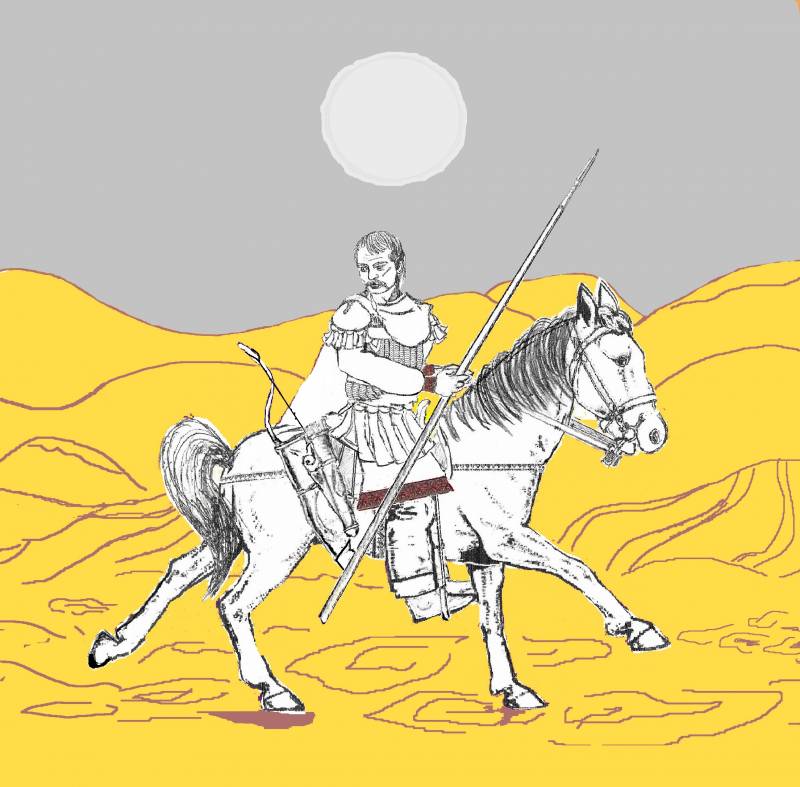
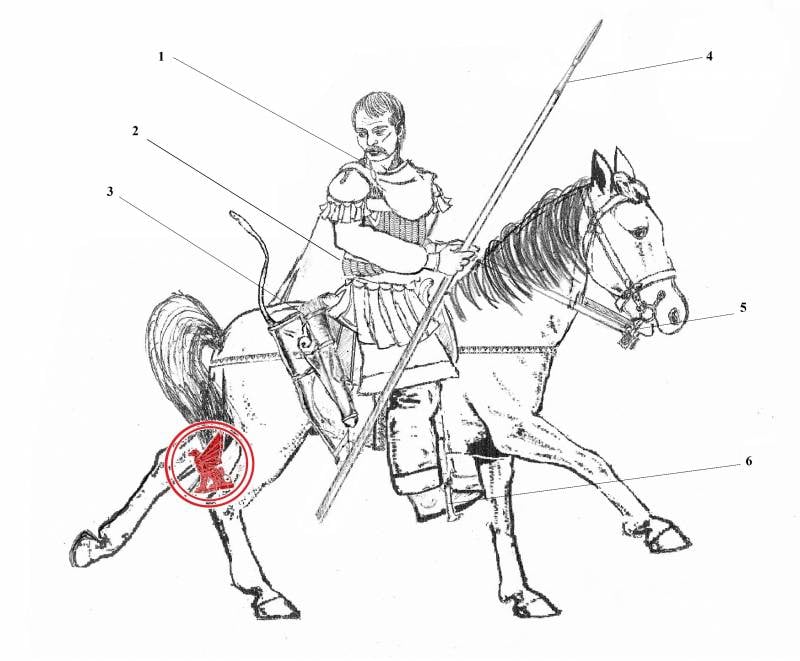
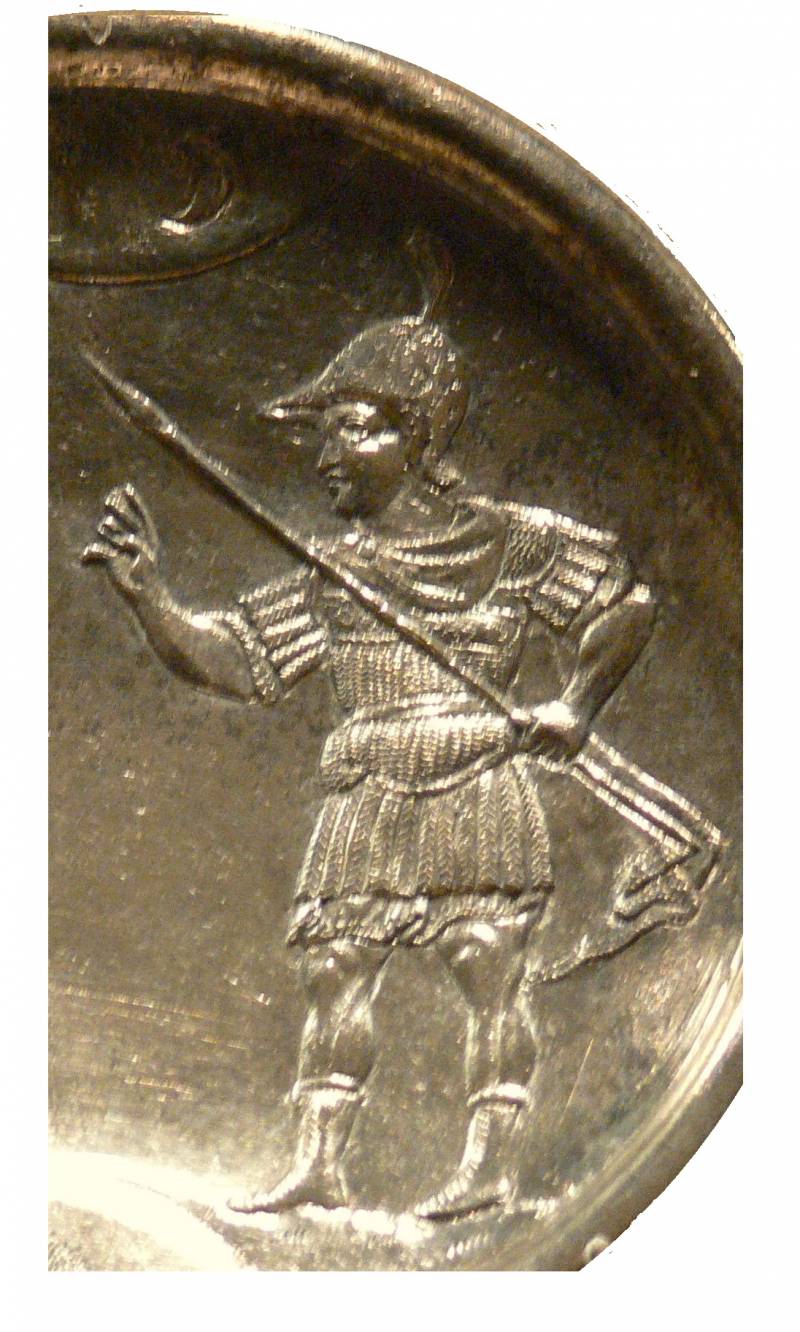
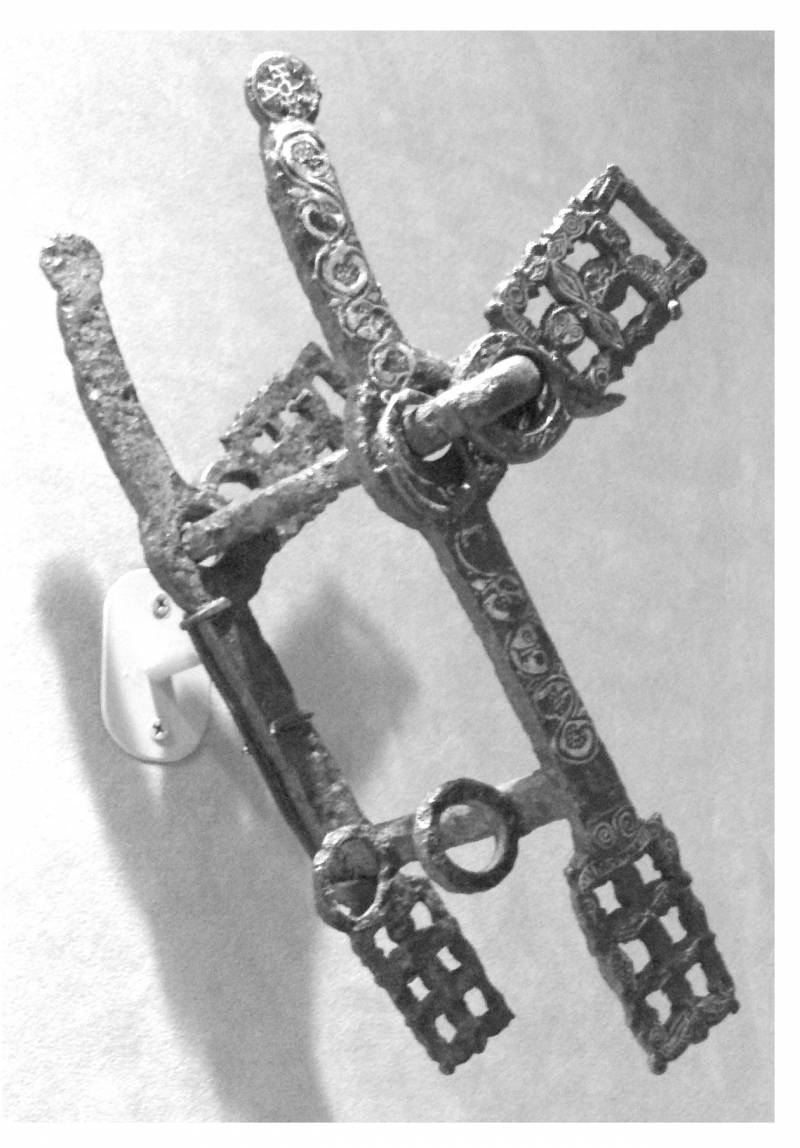
Information